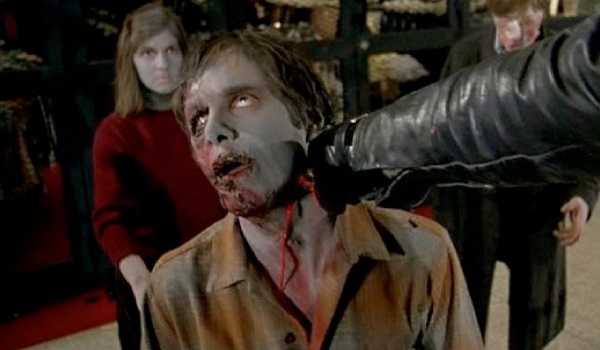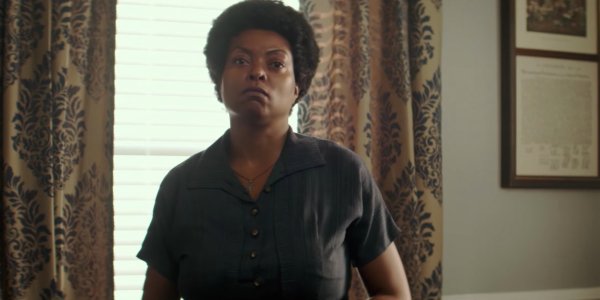The Best Zombie Movies Broken Down By Zombie-Type

Out of all the monster movie genres out there, few have gotten as many entries as the zombie genre. Some may argue hype on the genre has somewhat cooled, although with The Walking Dead set to start making Rick Grimes features, and more shows and films springing up all the time, it's safe to say the zombie genre will not die. Kind of ironic, right?
With that said, there have been so many entries in the zombie genre that some of the better quality features have been lost in the mix as decades pass. Additionally, some audiences may have specific zombies they want to see in a movie, be it the iconic walker, aggressive runners, classic voodoo, or the lighthearted funny zombie flick. These are the definitive picks for the best zombie films someone should hit up first before getting into the other offerings.
The Best Walker Zombie Movies
Walker zombies are the traditional type of zombie most people are familiar with. They're slow moving, work in large numbers and aren't always the sharpest tools in the box. There are exceptions, of course, but these types of zombies are built more towards building films more on suspense and claustrophobic situations than fast-paced over-the-top action.
Dawn Of The Dead
It's impossible to make a list of great zombie films without featuring at least one by the godfather of modern zombies. George A. Romero's Dawn of the Dead is one of his most profitable and critically acclaimed features, and has served as the inspiration for numerous zombie movies that followed. The effects may be a bit dated compared to shows like The Walking Dead, but the story is as timeless as ever and remains a classic.
Zombie
Zombie, or Zombi 2 in Italy, features the traditional type of walker zombie, although this one is technically a mixture between walker/voodoo genres. With that said, voodoo isn't as heavy to the plot as some of the entries seen later. What this movie is heavy on is some truly gross and cringe-worthy imagery to see in this feature. There's also an underwater zombie that gets into it with a shark, and that alone is worth the price of admission.
Planet Terror
Planet Terror isn't the most conventional zombie film out there, which may be why more folks are drawn to it as time goes on. While Robert Rodriguez's feature was viewed as the lesser in the grindhouse double feature, there's no denying its unique style and aesthetic have helped it become a stand out of the genre. It also helps Rose McGowan's character has a gun for a leg.
The Best Runner Zombie Movies
As the name would imply, runner zombies are more fast-moving and generally more athletic than the walker-types. These zombies plow ahead with reckless abandon, and generally have little regard for their own preservation or other zombies around them. Speed is obviously a scary attribute for a monster that doesn't have to worry about endurance, so runner zombie movies are often high-action and high intensity throughout a bulk of the feature.
28 Days Later
There are some movies that, if someone is looking to get into the zombie genre, can't be missed. 28 Days Later is mandatory viewing for its heart-pounding action, fast and strong as hell zombies, and view of just how bleak a post-apocalyptic zombie world can be. There's also times where Danny Boyle's film is beautiful, in what may be one of the most aesthetically pleasing zombie movie for film buffs.
Train To Busan
South Korea isn't typically known as a hub for films that appeal to an American audience, but the nation has had a few hits over the years. Even for those who aren't too psyched for foreign language films with subtitles, Train To Busan is worth checking out. Perhaps the best part of this film is the zombies' one weakness being an inability to see in the dark, which makes for incredibly tense and heart-pounding scenes.
World War Z
A lot of die hard zombie fans will take issue with this entry, mainly because it's not the same quality of the Max Brooks novel it was adapted from. Be that as it may, World War Z has some fantastic sequences with runner zombies, and it takes advantage of its big Hollywood budget to show some scenes most zombie movies haven't pulled off. Unfortunately, the long in-development sequel was cancelled, so chances of a follow up are slim.
The Best Voodoo Zombie Movies
Before George Romero brought zombies back into the mainstream, voodoo zombies were typically the cinematic standard for zombies in cinema. These creatures are typically similar attribute-wise to walker zombies, but enslaved throughout the use of Haitian Voodoo magic or some spell that enslaves them to an individual. For those looking for some of the beginnings of zombies in Hollywood, these are the films to start with.
White Zombie
White Zombie is regarded as the first feature length zombie film, and the movie that laid the groundwork for others. Dracula icon Bela Lugosi plays a witch doctor who is capable of taking dead bodies, re-animating them and making them his slaves. It's far from the modern interpretation of a zombie, but it is based in the Haitian voodoo interpretation of zombies. For those that want to see where it all started, this is where it starts.
Sugar Hill
One of the more contemporary voodoo zombie films, Sugar Hill is a '70s blaxploitation film about a vengeful woman who seeks revenge on the mob boss who killed her boyfriend. Diane "Sugar" Hill goes to a former voodoo queen and ends up summoning Baron Samedi and zombies to take the fight to the mob. This might be one of the only movies where the main character is actually the source of a zombie outbreak.
Voodoo Man
Voodoo Man is one of the weirder entries on this list, as it goes from traditional voodoo zombie film to meta by the movie's end. Without revealing too much about the film's ending, a character suggests making a movie called "Voodoo Man" and requests that Bela Lugosi (who is in the film) be in the movie. Considering this movie starts with a doctor tricking women into stealing their essences to resurrect his dead wife, that's kind of impressive.
The Best Comedy Zombie Films
These aren't necessarily a type of zombie per se, but there's been a handful of zombie comedy movies that are some of the best zombie films out there. These movies typically have a mixture of different zombie types, and can poke fun at the overall silliness of the genre. For those looking for a laugh just as much as gore, look no further than these great movies.
Zombieland
One of the zombie genre's funniest films is also one of its most star-studded, as Zombieland boasts talent like Emma Stone, Jesse Eisenberg, Abigail Breslin, Woody Harrelson and Bill Murray. The zombie rules of survival in this movie are great advice should an actual zombie apocalypse ever hit, and the zombie attacks highlight some of the sillier encounters a more serious zombie film wouldn't tackle. It's no wonder audiences are still excited for a sequel a decade later!
Shaun of the Dead
Had Shaun of the Dead never been made, it's possible the careers of Edgar Wright, Simon Pegg and Nick Frost wouldn't have skyrocketed to the status they enjoy now. That's not important when it comes to the film, which is a fantastic zombie flick regardless of its impact on those individuals. Shaun's story is exceptionally well told, and most zombie movie lovers can attest that strong individual stories are not a strength of the zombie genre.
Dead Alive
This is zombie comedy that's a bit of a cult classic, mainly because its relatively unknown director at the time became a pretty big deal years later. Even if most folks check this out due to their love of Lord of the Rings and Peter Jackson, Dead Alive is a pretty funny film, with some of the more obscene slapstick humor that can't be found in most zombie films.
Do you have a great zombie movie that didn't make the list that folks should check out? Be sure to post it below in the comics and keep with CinemaBlend for all the latest news on zombies, movies, and all things entertainment.






